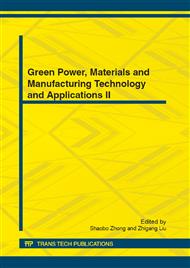p.903
p.909
p.914
p.919
p.924
p.929
p.935
p.939
p.944
Coupled-Field Finite Element Analysis of MEMS Compound Electrostatic Actuator by Using the ANSYS Software
Abstract:
MEMS (Microelectromechanical Systems) electrostatic actuators have been successfully applied in a number of areas, including accelerometers, gyroscopes, pressure sensors, and optical devices. In this paper, the actuator optimization of a silicon bulk-micro machined MEMS compound electrostatic actuator of an optical device is discussed. The actuator uses folded-beam structure to enhance the electromechanical performance. The movable block is connected to the compound electrostatic actuator through unequal-height folded-beam springs. The lower-height springs connect the block with parallel plates, and can convert the descending motion of the plates into out-of-plane tilting motion of the block efficiently Additionally, the block is capable of in-plane motion by applying the driving force of the comb-drive actuator through structural connection. ANSYS FEM simulation is used to extract the device electromechanical performance and resonant frequency of the device. By gradually varying the design parameters in ANSYS simulation, the relationship between the actuator electromechanical performance and various design parameters is derived. The curves of actuator electromechanical performance versus beam length and beam height are derived and they are in good agreement with theoretical prediction. From the analysis it is concluded that the actuator behavior strongly depends upon various actuator parameters. By adjusting design parameters, desired electromechanical performance can be obtained. Based on the simulation results, a set of optimized design parameters for the compound electrostatic actuator is decided. The above-proposed MEMS compound electrostatic actuator may be used for many applications, such as optical device and micro-operating.
Info:
Periodical:
Pages:
929-934
Citation:
Online since:
November 2012
Authors:
Keywords:
Price:
Сopyright:
© 2012 Trans Tech Publications Ltd. All Rights Reserved
Share:
Citation:


